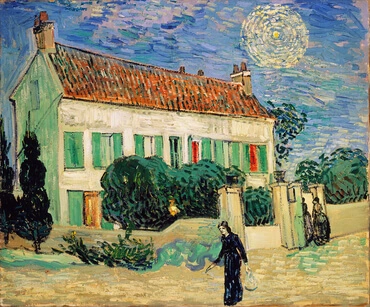1
Derpå sagde HE
EN til Moses: "Gå til Farao! Thi jeg har forhærdet hans og hans Tjeneres Hjerte, at jeg kan komme til at gøre disse mine Tegn iblandt dem,
2
for at du må kunne fortælle din Søn og din Sønnesøn, hvorledes jeg handlede med Ægypterne, og om de Tegn, jeg gjorde iblandt dem; så skal I kende, at jeg er HE
EN."
3
Da gik Moses og Aron til Farao og sagde til ham: "Så siger HE
EN, Hebræernes Gud: Hvor længe vil du vægre dig ved at ydmyge dig for mig? Lad mit Folk rejse, at de kan dyrke mig!
4
Men hvis du vægrer dig ved at lade mit Folk rejse, se, da vil jeg i Morgen sende Græshopper over dine Landemærker,
5
og de skal skjule Landets Overflade, så man ikke kan se Jorden, og opæde
esten af det, som er blevet tilovers for eder efter Haglen, og opæde alle eders Træer, som gror på Marken;
6
og de skal fylde dine Huse og alle dine Tjeneres og alle Ægypternes Huse således, at hverken dine Fædre eller dine Fædres Fædre nogen Sinde har oplevet Mage dertil, fra den Dag de kom til Verden og indtil denne Dag!" Dermed vendte han sig bort og forlod Farao.
7
Men Faraos Tjenere sagde til ham: "Hvor længe skal denne Mand styrte os i Ulykke? Lad dog disse Mennesker rejse og lad dem dyrke HE
EN deres Gud! Har du endnu ikke indset, at Ægypten går til Grunde?"
8
Moses og Aron blev nu hentet tilbage til Farao, og han sagde til dem: "Drag af Sted og dyrk HE
EN eders Gud! Men hvem er det nu, der vil af Sted?"
9
Moses svarede: "Med vore Børn og vore gamle vil vi drage af Sted, med vore Sønner og vore Døtre, vort Småkvæg og vort Hornkvæg vil vi drage af Sted, thi vi skal fejre HE
ENs Højtid."
10
Da sagde han til dem: "HE
EN være med eder, om jeg lader eder rejse sammen med eders Kvinder og Børn! Der ser man, at I har ondt i Sinde!
11
Nej men I Mænd kan drage bort og dyrke HE
EN; det var jo det, I ønskede!" Derpå jog man dem bort fra Farao.
12
Da sagde HE
EN til Moses: "
æk din Hånd ud over Ægypten og få Græshopperne til at komme; de skal komme over Ægypten og opæde alt, hvad der vokser i Landet, alt, hvad Haglen har levnet!"
13
Moses rakte da sin Stav ud over Ægypten, og HE
EN lod en Østenstorm blæse over Landet hele den Dag og den påfølgende Nat; og da det blev Morgen, førte Østenstormen Græshopperne med sig.
14
Da kom Græshopperne over hele Ægypten, og de slog sig ned i hele Ægyptens Område i uhyre Mængder; aldrig før havde der været så mange Græshopper, og ingen Sinde mere skal der komme så mange.
15
Og de skjulte hele Jordens Overflade, så Jorden blev sort af dem, og de opåd alt, hvad der voksede i Landet, og alle Træfrugter, alt, hvad Haglen havde levnet, og der blev intet grønt tilbage på Træerne eller på Markens Urter i hele Ægypten.
16
Da lod Farao skyndsomt Moses og Aron kalde til sig og sagde: "Jeg har syndet mod HE
EN eders Gud og mod eder!
17
Men tilgiv mig nu min Synd denne ene Gang og gå i Forbøn hos eders Gud, at han dog blot vil tage denne dødbringende Plage fra mig!"
18
Da gik Moses bort fra Farao og bad til HE
EN.
19
Og HE
EN lod Vinden slå om til EN voldsom Vestenvind, som tog Græshopperne og drev dem ud i det røde Hav, så der ikke blev EN eneste Græshoppe tilbage i hele Ægyptens Område.
20
Men HE
EN forhærdede Faraos Hjerte, så han ikke lod Israeliterne rejse.
21
Derpå sagde HE
EN til Moses: "
æk din Hånd op mod Himmelen, så skal der komme et Mørke over Ægypten, som man kan tage og føle på!"
22
Da rakte Moses sin Hånd op mod Himmelen, og der kom et tykt Mørke i hele Ægypten i tre Dage;
23
den ene kunde ikke se den anden, og ingen flyttede sig af Stedet i tre Dage; men overalt, hvor Israeliterne boede, var det lyst.
24
Da lod Farao Moses kalde og sagde: "Drag hen og dyrk HE
EN. Dog skal eders Småkvæg og Hornkvæg blive tilbage, men eders Kvinder og Børn må I tage med."
25
Men Moses sagde: "Du må også overlade os Slagtofre og Brændofre, som vi kan bringe HE
EN vor Gud;
26
også vore Hjorde må vi have med, ikke en Klov må blive tilbage, thi dem har vi Brug for, når vi skal dyrke HE
EN vor Gud, og vi ved jo ikke,hvor meget vi behøver dertil, før vi kommer til Stedet."
27
Da forhærdede HE
EN Faraos Hjerte, så han nægtede at lade dem rejse.
28
Og Farao sagde til ham: "Gå bort fra mig og vogt dig for at komme mig for Øje mere; thi den Dag du kommer mig for Øje, er du dødsens!"
29
Da sagde Moses: "Du har sagt det, jeg skal ikke mere komme dig for Øje!"







